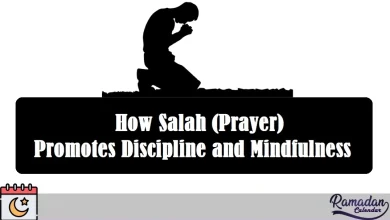How to Perform Salah (Prayer): A Step-by-Step Guide for Beginners
How to Perform Salah: A Step-by-Step Guide for Beginners

How to Perform Salah (Prayer): A Step-by-Step Guide for Beginners: Salah, the Islamic act of prayer, is one of the most fundamental practices in a Muslim’s daily life. It connects a person to Allah, offering a time for reflection, gratitude, and devotion. For someone just beginning this sacred journey, learning the steps of Salah can seem overwhelming. But fear not—mastering the basics of Salah will not only help you fulfill your religious obligations, but it will also bring you inner peace and spiritual fulfillment. In this guide, we will take you through the steps of performing Salah in a simple and easy-to-understand manner.
1. Prepare Yourself: Purity is Key
Before beginning your Salah, you must ensure that you are in a state of physical and spiritual purity. This is achieved through performing wudu (ablution), which involves washing specific body parts—your hands, mouth, nose, face, arms, head, and feet. Wudu is essential because it prepares both your body and mind for the act of worship.
Once you’ve completed your wudu, it’s time to choose a clean and quiet place for prayer. The area should be free of distractions and impurities, and if possible, facing the direction of the Ka’bah in Mecca (known as the Qiblah).
2. The Intention: Niyyah
Salah begins with an internal intention (niyyah) in your heart. This intention is simply the conscious decision to pray and seek closeness to Allah. It doesn’t require verbalization, but you must remind yourself that you are standing before your Creator, preparing to offer your worship with sincerity.
3. Starting the Prayer: Takbir al-Ihram
The first physical act in Salah is the Takbir al-Ihram—the opening declaration of prayer. Stand straight with your feet about shoulder-width apart, raise both hands and say aloud, “Allahu Akbar” (Allah is the Greatest). This marks the beginning of your Salah, and from this moment onward, you are engaged in a conversation with Allah.
4. Recite the Opening Prayer: Surah Al-Fatiha
After the Takbir, place your right hand over your left hand, just above your navel. Begin the prayer by reciting Surah Al-Fatiha, the opening chapter of the Qur’an. This Surah consists of seven verses and holds great significance in every prayer. It’s a praise of Allah’s greatness and a request for guidance.
Surah Al-Fatiha:
- In the name of Allah, the Most Gracious, the Most Merciful.
- Praise be to Allah, the Lord of all the worlds.
- The Most Gracious, the Most Merciful.
- Master of the Day of Judgment.
- You alone we worship, and You alone we ask for help.
Guide us to the straight path. - The path of those who have received Your grace; not of those who have brought down wrath upon themselves, nor of those who have gone astray.
- Once you have recited this Surah, it’s time to follow it up with another verse from the Qur’an, preferably a short Surah like Surah Al-Ikhlas (the 112th chapter), Surah Al-Falaq (the 113th chapter), or Surah An-Nas (the 114th chapter).
5. Bowing: Ruku
Next, you will move into the position of ruku’, the bowing position. To do this, bend at the waist, keeping your back and head level, while your hands rest on your knees. In ruku’, you should say: “Subhana Rabbiyal Azeem” (Glory is to my Lord, the Almighty). This phrase should be repeated three times, but you may say it more if you feel inclined.
In this position, reflect on the greatness of Allah and acknowledge your humility. It’s a moment of reverence and submission.
6. Standing Again: Qawmah
After ruku’, you will rise back up into a standing position. During this, say: “Sami’ Allahu liman hamidah” (Allah hears the one who praises Him). Then, after standing fully, say: “Rabbana lakal hamd” (Our Lord, to You is due all praise). This position is called qawmah. Take a brief moment here to reflect on Allah’s mercy and respond to His call.
7. Prostration: Sujud
Following the standing position, it’s time for sujood, the act of prostration. Drop down to the floor, placing your forehead, nose, both palms, both knees, and toes on the ground. This position represents the ultimate humility in worship. While in sujud, recite: “Subhana Rabbiyal A’la” (Glory is to my Lord, the Most High).
Sujood is one of the most powerful moments in prayer, as it brings you closest to Allah. Take this opportunity to pray for anything on your heart, ask for forgiveness, and thank Allah for His countless blessings.
8. Sitting Between Prostrations: Jalsa
After the first prostration, sit on your legs with your hands resting on your thighs. This position is called jalsa, and you should take a short moment here to regain your composure before moving into the second sujud. During this time, say: “Rabbighfir li” (My Lord, forgive me). Afterward, perform the second prostration in the same way as the first.
9. The Final Tashahhud: Sitting for the Conclusion
After completing the required number of units (rak’ahs), which varies depending on the time of day (for example, two rak’ahs for Fajr, four for Dhuhr, Asr, and Isha, and three for Maghrib), you will sit for the final tashahhud (testification). In this position, you say:
Tashahhud: “At-tahiyyatu lillahi wa-salawatu wa-tayyibatu. As-salamu ‘alayka ayyuha an-nabiyyu wa rahmatullahi wa barakatuhu. As-salamu ‘alayna wa ‘ala ibadillahi as-salihin.”
This means, “All greetings, blessings, and good deeds are for Allah. Peace be upon you, O Prophet, and Allah’s mercy and blessings. Peace be upon us and upon the righteous servants of Allah.
“You then end the prayer with the tasleem—turn your head to the right, then to the left, saying: “As-salamu ‘alaykum wa rahmatullah” (Peace and blessings be upon you). This marks the conclusion of your Salah.
10. Reflect and Pray
While the physical acts of Salah are important, the spiritual reflection you engage in throughout the prayer is equally essential. Allow the words you recite to sink into your heart, and use this sacred time to connect deeply with Allah.
Conclusion
Performing Salah might seem like a complex ritual at first, but with consistent practice, it will become second nature. It’s not just a physical act of worship; it’s an opportunity to communicate with Allah, to seek His guidance, and to find solace in His presence. Remember, the beauty of Salah lies not only in the perfection of the movements but also in the sincerity of your heart.
As you begin your journey of prayer, know that with each prayer, you are growing closer to Allah, and you are fulfilling one of the most important aspects of your faith. Stay patient, keep learning, and know that every step you take in this act of worship brings peace and blessings into your life.





